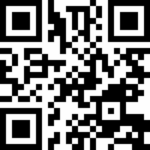What is a dynamic QR-Code?
While the non-professional only talks about QR-Codes in general, people with more expertise know that there are a few different subcategories. Essentially, however, one speaks of two categories: static QR-Code and dynamic QR-Code. But where exactly is the difference?
Looking at it purely from the outside, you cannot tell the difference. Whether static or dynamic – both are the same square code consisting of many white and black pixels.
The real differentiation is on the inside and in the way the code works. A static QR-Code is easy to explain. You go to a QR-Code-Generator, upload the information that shall be displayed by scanning the code and a code is generated. You can now download it and use it for various purposes, e.g. on advertising material.
Let’s assume that the QR-Code contains a website link that is accessed when the code has been scanned. But now we change our website and the link we inserted before does not work anymore. The code now leads to a wrong or old page and is therefore unusable. All advertising material and other items where this code has been printed can no longer be used in a useful way.
This is exactly where the dynamic QR-Code becomes important: it enables us to exchange and update the stored information retrospectively. Whether it is a website link, a menu card or a service catalogue, the data can be replaced at any time. And this happens without changing the appearance and coding of the QR-Code. In this way, the old QR-Code remains usable, but provides the new information. Advertising material that has already been printed or even distributed can still be used in a beneficial way.
The essential difference therefore lies in the editability: a dynamic QR-Code can be changed afterwards, a static one not.
In addition, a dynamic QR-Code offers further features such as providing statistics on the scans.
Create a dynamic QR-Code yourself with our QR-Code-Generator!
